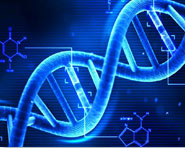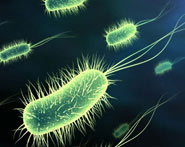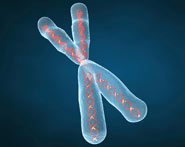


 النبات
النبات
 الحيوان
الحيوان
 الأحياء المجهرية
الأحياء المجهرية
 علم الأمراض
علم الأمراض
 التقانة الإحيائية
التقانة الإحيائية
 التقنية الحيوية المكروبية
التقنية الحيوية المكروبية
 التقنية الحياتية النانوية
التقنية الحياتية النانوية
 علم الأجنة
علم الأجنة
 الأحياء الجزيئي
الأحياء الجزيئي
 علم وظائف الأعضاء
علم وظائف الأعضاء
 الغدد
الغدد
 المضادات الحيوية
المضادات الحيوية|
Read More
Date: 2024-12-18
Date: 3-3-2016
Date: 18-3-2016
|
Anthrax is a bacterial disease that attacks humans and animals and is caused by infectious endospores of Bacillus anthracis. An endospore is a thick-walled, dormant cell able to withstand harsh conditions, such as heat, drying, and exposure to chemicals. Anthrax and other Bacillus spores have been shown to remain alive for centuries. Anthrax possesses all of the characteristics of an acute disease: It worsens quickly after infection; it is severe; and ill- ness lasts for a short period. In humans, anthrax is contracted in one of three ways: through skin contact with the endospores, by inhaling endospores into the lungs, or by ingesting them. Skin contact and inhalation are the most common modes of transmission; infection caused by ingesting endospores is very rare.
Although anthrax is an ancient disease, B. anthracis has developed into a feared pathogen in recent years because of its potential as a biological weapon. The specific cause of anthrax has been known for a century even though it has always been a fairly rare disease. In the United States, the Centers for Disease Control and Prevention (CDC) estimates anthrax incidence of about one case in 300 million people per year. The World Health Organization (WHO) proposes that anthrax is similarly rare worldwide, but incidence increases in sub-Saharan Africa, parts of Asia, southern Europe, and Australia.
Those regions in Africa, Asia, Europe, and Australia have higher incidences of anthrax today because of the prevalence of animal-based work in certain areas. Throughout history, anthrax has been associated with jobs in which people work with contaminated textiles, animal hides, animal hair, wool, or contaminated feces. Direct contact with animals, their products, or soil containing B. anthracis endo- spores is thought to account for at least 95 percent of the world's anthrax cases. People who handle these animal products or work with contaminated soils have an increased risk of infection due to disease transmission called contact transmission. In contact transmission, a person becomes infected by touching an object carrying the pathogen.
Sporadic cases of anthrax worldwide occur on an average of once a year, usually on farms. Public health departments manage most of these cases quickly to prevent spread of the endospores. During a 2008 outbreak of anthrax in cattle in which 13 animals died on a farm in Sweden, the infectious dis- ease expert Bengt Larsson said to a Swedish paper, "This disease is not to be taken lightly. The disease is classified under epizootic [infecting many animals in defined area] legislation which shows just how serious it is and the department of agriculture can decide on the appropriate measures." The Swedish farm followed the standard actions for managing further outbreak: The farm's owner put all the cattle under quarantine and workers who had had contact with the animals were treated with antibiotics.



|
|
|
|
لشعر لامع وكثيف وصحي.. وصفة تكشف "سرا آسيويا" قديما
|
|
|
|
|
|
|
كيفية الحفاظ على فرامل السيارة لضمان الأمان المثالي
|
|
|
|
|
|
|
شعبة مدارس الكفيل: مخيَّم بنات العقيدة يعزِّز القيم الدينية وينمِّي مهارات اتخاذ القرار لدى المتطوِّعات
|
|
|